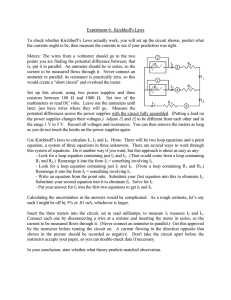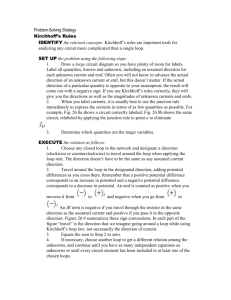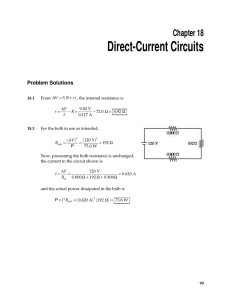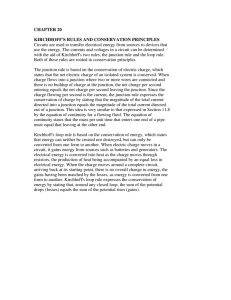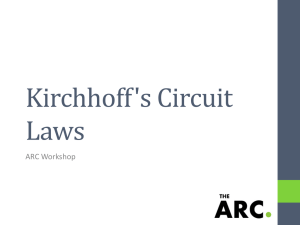18.16 (a) The equivalent resistance of the parallel combination
advertisement
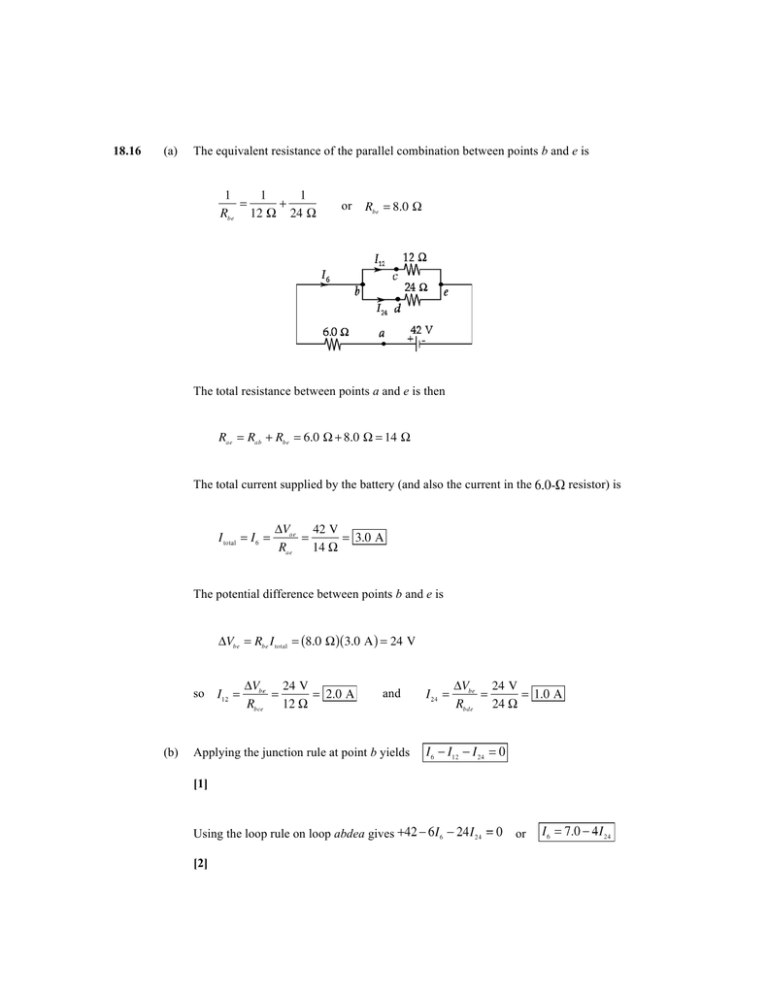
18.16 (a) The equivalent resistance of the parallel combination between points b and e is or The total resistance between points a and e is then The total current supplied by the battery (and also the current in the The potential difference between points b and e is so (b) and Applying the junction rule at point b yields [1] Using the loop rule on loop abdea gives [2] or resistor) is and using the loop rule on loop bcedb gives or [3] Substituting Equations [2] and [3] into [1] yields Then, Equations [2] and [3] yield or and 18.17 Going counterclockwise around the upper loop, applying Kirchhoff’s loop rule, gives or From Kirchhoff’s junction rule, so Going around the lower loop in a clockwise direction gives or 18.20 Following the path of from a to b and recording changes in potential gives Now, following the path of from a to b and recording changes in potential gives , or Thus, is directed and has magnitude of 2.0 A. Applying Kirchhoff’s junction rule at point a gives 18.26 Using Kirchhoff’s loop rule on the outer perimeter of the circuit gives or [1] For the rightmost loop, the loop rule gives or [2] Applying Kirchhoff’s junction rule at either junction gives [3] (a) Substituting Equations [1] and [2] into [3] yields and (b) 18.27 (a) Then, Equation [2] gives . This multi-loop circuit does not contain any resistors in series (i.e., connected so all the current in one must pass through the other) nor in parallel (connected so the voltage drop across one is always the same as that across the other). Thus, this circuit cannot be simplified any further, and Kirchhoff’s rules must be used to analyze it. (b) Assume currents in the directions shown. Then, using Kirchhoff’s junction rule at junction a gives [1] Applying Kirchhoff’s loop rule on the lower loop, or [2] and for the loop around the perimeter of the circuit, or [3] Substituting Equations [2] and [3] into [1]: which reduces to and gives Then, Equation [2] gives . , and from Equation [3], All currents are in the directions indicated in the circuit diagram given above. 18.30 The time constant is or 18.35 (a) . Considering units, we find has units of time. The charge remaining on the capacitor after time t is . . Thus, if or (b) , so , then and ,

